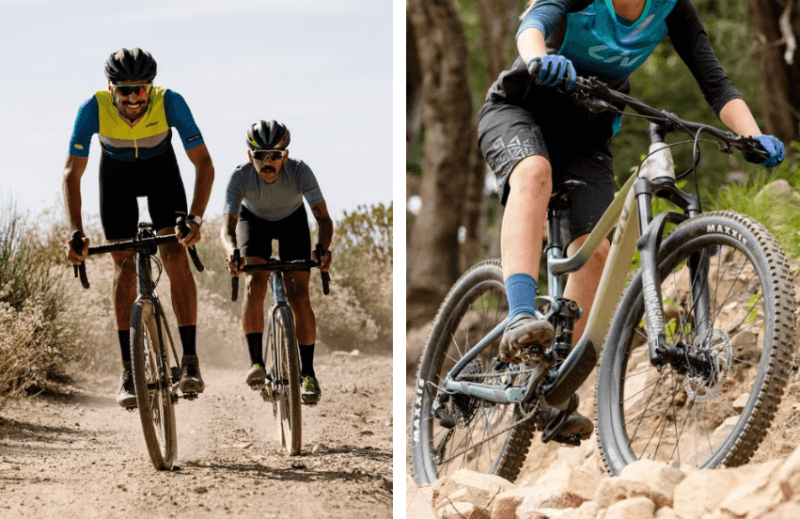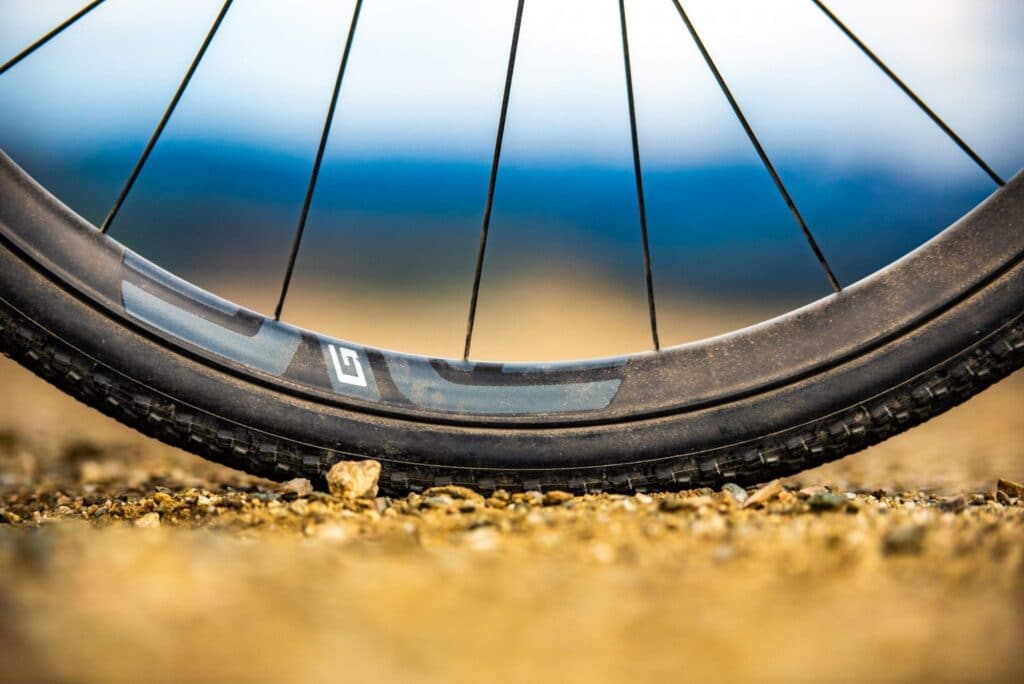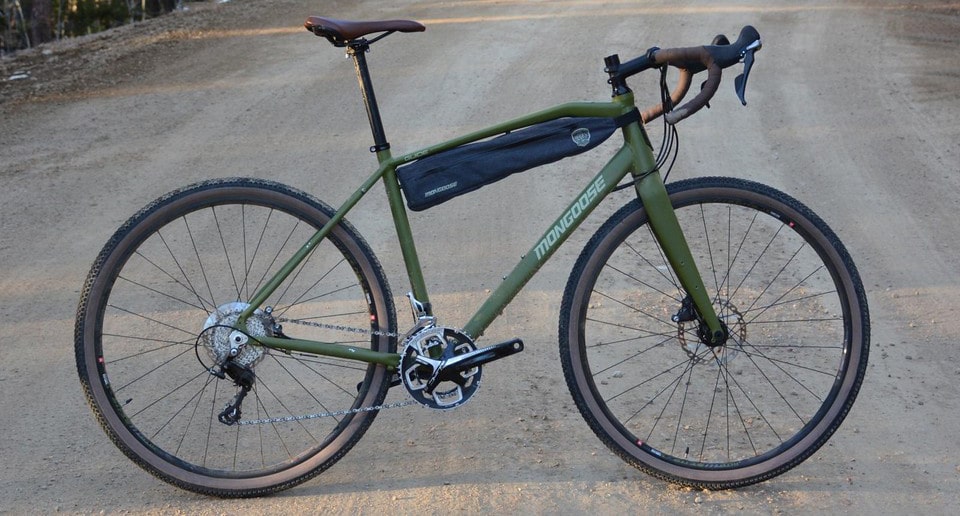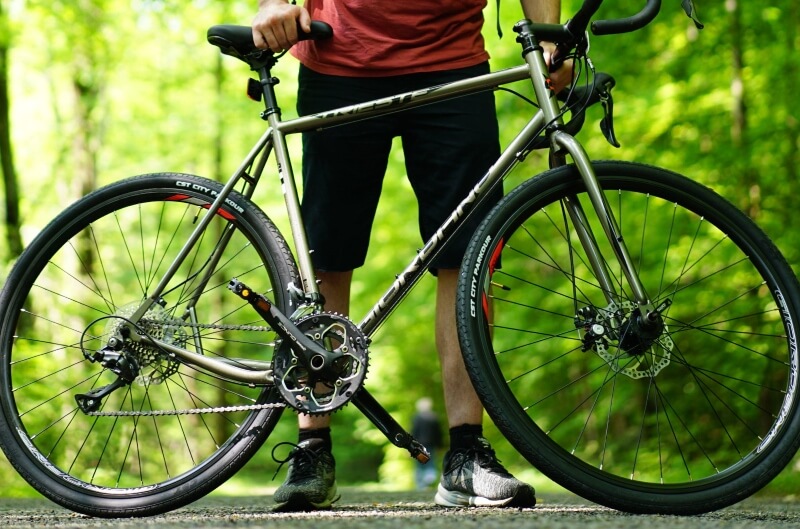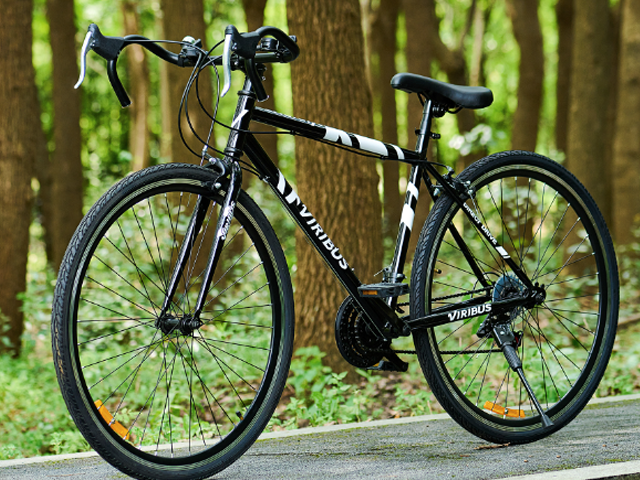- Trails
-
Bikes
-
Gear
-
Tips & Tricks
-
About us


A gravel bike Trusted Source Bikepacking and gravel bikes: new concepts in off-road cycling, or marketing fad? | Cycling | The Guardian A gravel bike is perhaps the love child of a road bike and a mountain bike, thus a close cousin of the cyclocross bike. www.theguardian.com has been designed to accommodate mountain, cyclocross, and road bike features. It is a unique brand that can be used for adventure and all-terrain riding. Though any cyclist can use gravel bikes, you should understand the gravel bike size chart. This will help you, especially when making purchases, to avoid wrong choices.
The best gravel bikes should be the lightest gravel bikes, as well as sturdy and versatile. Gravel bikes are prominent for their comfortability due to the wide tires. They also have seamless navigation on steep terrains aided by their lightweight frames. In this article, we dive into the geometry and sizing chart for bikes to enlighten you when choosing your ideal gravel bike.
Numerous types of materials are used to construct gravel bikes frames, such as carbon, aluminum, steel, and titanium. Though frame lightness is a significant factor, you should dwell on a tough frame.
The frame material also determines the pricing of the bike. For instance, carbon materials are relatively less expensive. Some affordable gravel bikes offer an exciting cycling experience. Also, familiarizing yourself with the gravel bike frame size chart can enable you to choose a bike that is comfortable to ride and conforms with your body.
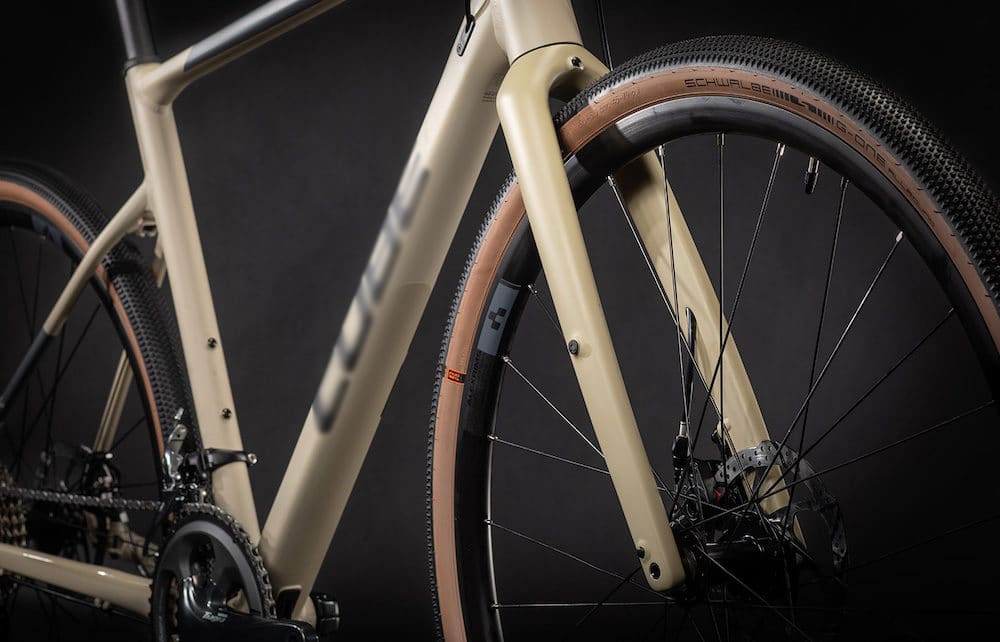
Geometry is a wide scope and an imperative factor in gravel bikes. However, most gravel bike manufacturers commonly use small, medium, and large gravel bike frames sizing rather than breaking it down to the gravel bike specs.
Gravel bikes typically have a longer wheelbase and elevated handlebars than road bikes. Some models, such as the AddMotor 750W Motan M-450 P7 Fat Tire Electric Bike, are customized for an upright riding position. This enhances comfortability, particularly in long rides, and can be used by shorter women and the elderly.
The head tube may not be longer compared to a road bike. The handlebars are designed to be slightly elevated than a road bike. This is because the axle-to-crown fork size is long.
The height of the bottom bracket, defined as the vertical distance between the gravel bike wheelbase and the bottom bracket, causes concern for cyclists. This is what determines what size gravel bike you need. Some gravel bike models have a low bottom bracket height, while others are higher.
When choosing the height of a bottom bracket, you should be aware that a lower one enhances stability and bend while demeriting ground clearance. Taller bottom brackets are ideal for better cleaning of the gruff. However, they are not efficient in terms of stability. The tire size also has an implication on your gravel bike’s bottom bracket height.
A gravel bicycles sizes chart Trusted Source Gravel bike sizing & geometry: Everything you need to know | Cyclingnews A gravel bike can be seen as a crossover between road, cyclo-cross, and mountain bikes, including features from all three styles as well as its own unique brand. www.cyclingnews.com is one of the most advanced mechanisms for choosing a bicycle. Though gravel bikes and cyclocross bikes are identical in a fitting view, precise numerical dimensions differ. When you measure the centimeters from the bottom bracket center to the top of the safety post clamp, you will identify some variations. Furthermore, the length of the top tube is another differentiating factor.
As stated earlier, a gravel bike has an elevated head tube, unlike a road bike, which is essential for an upright position.
A drop-bar bike can be appropriate in estimating a gravel bike that suits your riding demands. You can ride it and check whether it is compatible with your interests. You can purchase a short road bike which size is less than 56cm and fit them with long stems and vice versa. Nonetheless, this does not apply to gravel bikes. They are customized to fit shorter stems of about 80 to 100mm.
| Cross/Gravel Bikes Fitting Guide | |||
| Measured Frame Sizes | Frame Sizes | Min Rider Height | Max Rider Height |
| 48cm / 18’9’’ | XS | 5’0” | 5’3” |
| 50cm / 19’685’’ | Small | 5’3” | 5’6” |
| 52cm / 20’47’’ | Small/M | 5’6” | 5’8” |
| 54cm / 21’26’’ | Medium | 5’8” | 5’11” |
| 56cm / 22’05’’ | Large | 5’11” | 6’1” |
| 58cm / 22’834’’ | Large/XL | 6’1” | 6’3” |
| 60cm / 22’622’’ | XL | 6’3” | 6’5” |
The most common are 50, 52 and 54 cm gravel bikes. The cyclocross bike frame sizing chart will basically be the same.
Understanding a gravel bike frame sizes chis imperative for most cyclists when choosing a bike. Also, other considerations such as a balanced sitting position, pedaling style, and the right bike size can also play a significant role. But there is more to incorporate than the above.
For instance, two bikes with different dimensions will have varied cycling experiences. This is because the frame differs in size, which may be a critical factor when making your selection.
Familiarizing with bike frame dimensions will enable you to get the spot-on size that you require. Additionally, other bike character traits such as bent, upright, long, and short are projected by frame dimensions.
The frame dimension also matters a lot in handling, steering, and control. This is due to the positioning and slope of the handlebars, among other factors. Additionally, riding does not only involve sitting on a bicycle and riding along. The frame dimensions and alignment determine a lot on comfortability or an endurance gravel bike position. An example is the 26″ Micargi Men’s Royal Dutch has a low slung stretch frame and a pair of huge wheels which allow you to ride comfortably and in all terrains.
Based on your preference, you may also feel like adding other components to your bike. Hence, taking a prior look at the frame dimensions can aid in making the right decision. Analyzing the details of the frame dimension and bike’s body can mitigate the risk of injury, fatigue, and performance hurdles due to the bike’s shape.
The head tube length is the distance from the bottom to the top of the bicycle head tube, while the head tube angle is the inclination of the head tube to the road.
This implies that bikes with a short head tube cause the front of the bike to be lower. It causes the cyclist to have a rough time trying to reduce wind and air resistance. On the other hand, bikes with a longer head tube place the front of the bike in an elevated orientation, giving it a wider view. Most racing bikes have a head tube distance of 12 to 15 cm while touring bikes have an approximate head tube length of 20cm.
Little effort is required when steering bikes with an upright head tube angle. This is because they have a fast steering control than models with gentler head tube angles. More power must be incorporated in gentler head tube angles as they have slower steering control.
Despite the control speed, stiffer steering controls are ideal for stability when under high speeds. This mainly applies to bikes with a forward carry and touring bicycles. It is also evident in mountain bikes that require reliable stability while maneuvering in sharp bends and bumpy roads.
It is the horizontal length from the top tube junction to the seat tube. This distance estimates how much space is sitting on the bike. It has become a prominent dimension as more bike manufacturers are adopting the sloping top tubes. It is also one of the three features that determine the length of the front triangle. This includes the length of the stem and height of the saddle seat to approximate how far the arms will extend from the sitting position to reach the handlebars
It is the perpendicular vertical distance measured from the central point of the bottom bracket to the highest position of the center of the head tube. You cannot design a frame without involving such measurements.
It dictates how high the foot distance is on the pedal while the hands are on the handlebars. A greater stack puts the cyclists in a more upright gravel bike body position. It is because the hands will be moved upwards, and the body rises more towards the vertical.
It is defined as the horizontal distance measured from the bottom bracket center to the highest position of the head tube. Gravel bike reach dictates how far the foot distance will be when on the pedal regarding the position of the hands-on the handlebars.
It has a high relation with stack height in bike geometry dimensions. They both determine the comfortability of the rider when the feet and hands are on the bike. You can identify whether a bike can suit your comfort by gauging reach and stack height even without trying it directly.
You should also note that the riding and comfort position varies from one individual to another based on the size, shape, and length of the arms and legs. Some providers do not disseminate information regarding the reach and stack height distance. Perhaps you can deploy a bike calculator to help you derive such information. You will be required to fill in other dimension details and calculate the stack to reach ratio of a gravel bike.
Different bike models have distinct characters that differentiate a stack and reach ratios. For instance, Racing bikes have a short stack and long reach, while other typical models have a longer stack and shorter reach.
As stack value escalates, the cyclists will experience a more relaxed and upright sitting position. Bikes manufacturers are aiming for long-term comfort design it with a stack value closer to the reach value.
Conversely, when the reach value goes up, the sitting position will be bent, causing the body to stretch. This is mainly designed for racing bikes that target speed increases. Hence, you should be conversant with stack and reach values as it will help you get a bike with an ideal shape and maximum position preference.
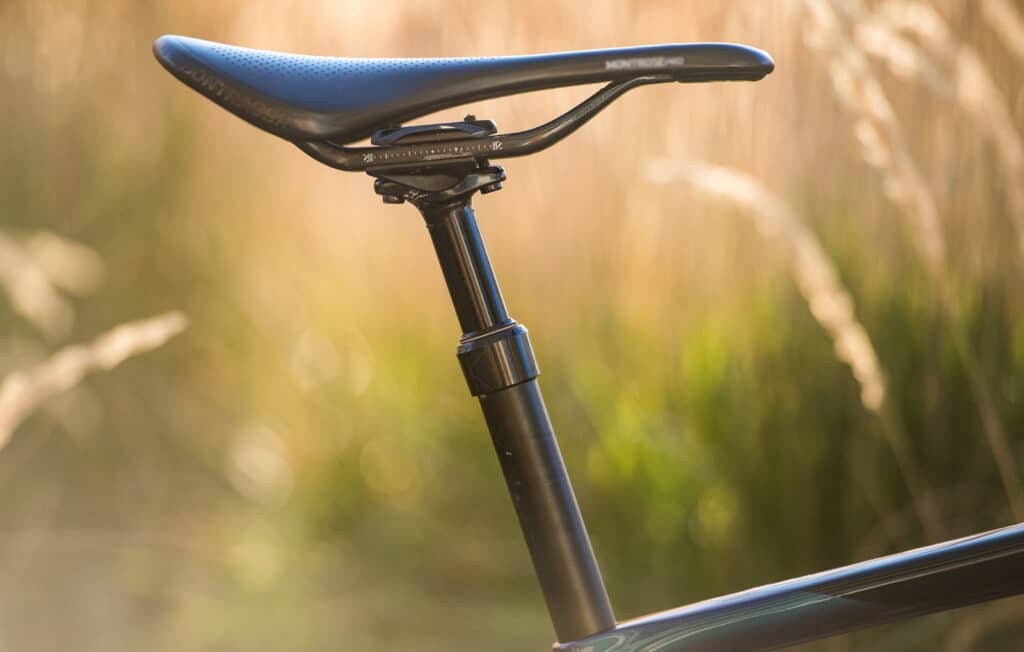
Seat tube length is a special requirement as it mainly functions on cyclists who require a certain height to be able to stand and balance on the bike. It is also necessary that you compare and calculate the stack and reach height. Seat tube length primarily applies to short bikes.
The seat tube angle is the angle of the seat in relation to the horizontal plane. It is measured from behind the seat tube, and it does not significantly impact the experience on the bike. This is because the height of the bike mount can be adjusted. Elevating or lowering the seat will reciprocate longer or shorter distances compared to bicycles with a steeper seat tube angle. You can ignore the size of the seat tube angle and dwell on the seat tube angle number.
Also known as the Effective Seat Angle (ESA), is the angle from the bottom bracket center to the saddle center while at the appropriate seat height. The right seat height gets determined by a position where your feet can have the lowest pedal position with minimal leg bending.
It dictates the ideal position between the waist and pedals. Saddling the pedals forward and backward may reduce or escalate the effective seat tube angle by up to 3 degrees. The more the ideal sitting position, the smaller the angle becomes. In this consideration, tall cyclists should have an Effective Seat Angle that is steeper than short cyclists while on a similar bike.
It is the distance between the vertical line at the center of the wheel and the projected extension of the fork of the surface. It is known as a fork rake in racing bikes and referred to as an offset fork in mountain bikes.
The fork rake is an imaginary line that has similar impacts as the head tube angle. They differ in units as the fork rake is defined in length, and the head tube angle is defined in degrees.
When you increase the length of the fork rake, you will experience faster handling, while vice versa will occur when you shorten it. If you lengthen the fork rake and lower the head tube angle, there will be a similar fork trail length.
The following terms are involved in detailed measuring of a bikes dimensions:
The terms can also be combined to enhance more dimensional measurements. For instance, C-C refers to Center to Center, and C to T refers to Center to Top.
Additionally, different calculation techniques may result in different numbers when executing the measurement of dimensions. Mountain bikes are generally measured using inches, while road bikes dimensions are in centimeters.
Some bikes have extensions at the seat tube above the top tube junction, while others use just a seat mast. This may not be easy when measuring and comparing the dimensions.
Another critical variation is between the adult and kid’s bikes. Manufacturers use the frame size to measure. They measure from the center of the crank axle to the top of the seat tube. Conversely, kids’ bikes depend on wheel size rather than the frame.
Gravel bikes have recently become popular because they are versatile and beginner-friendly. However, choosing your ideal size can be challenging at first. You need to assess several factors before making your purchase.
Ensure that you are conversant with the critical bike’s measurements. It is straightforward to end up with the wrong bike due to dimensional measurements. This will enable you to choose a frame that boosts your comfortability. Dimensions are also imperative in bike handling, control, and body alignment on the bicycle.
The length from the seat to the pedals and the handlebars should be a significant concern. This is relatively important based on your height and body conformation. Most manufacturers avail such information on the bike, making it easier to identify your ideal gravel frame size.
The versatility that gravel bikes deliver has caused them to be a cyclist’s favorite. They come in different sizes, which makes dimensional measurement a critical factor. You may choose an appealing bike and later discover that it limits your comfortability. You can also check a specialized gravel bike size chart to help you choose some of the best gravel outdoor bikes.
Other numerous dimensional factors cover the distances between the pedals, seat, and handlebars. They have a high relation to how you will handle and control your bike. Engaging a bike dimension calculator can also aid in the precise know-how of your bike’s measurements.
